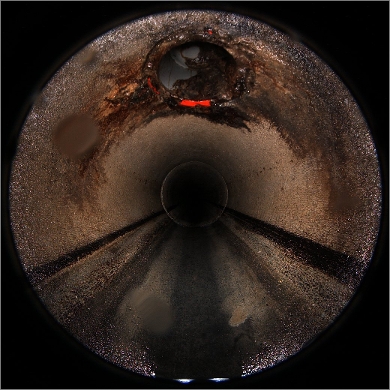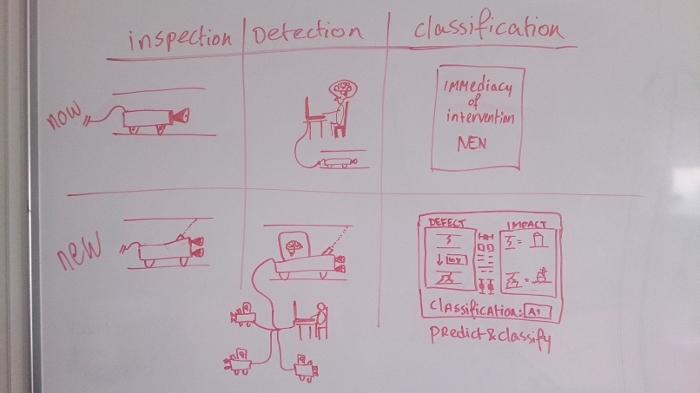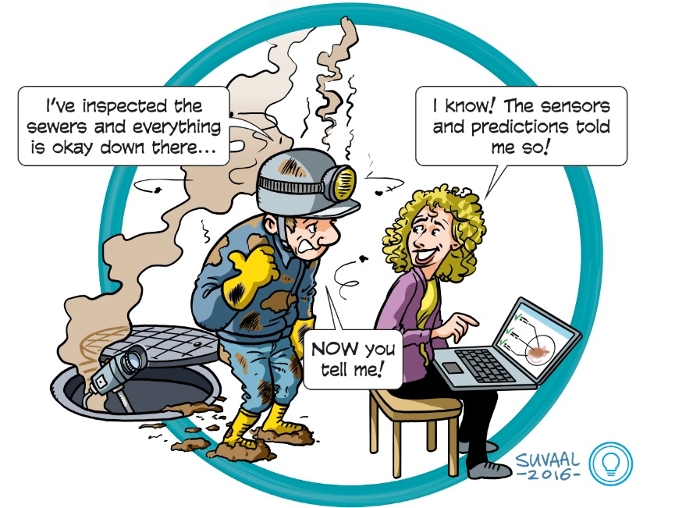Research project
SewerSense
Scientists of Leiden University and Technical University Delft are going to predict how and where defects in sewer systems arise. They are working with light sensitive camera’s, based on new automated multi-sensor inspection with stereo vision and laser range scanning. Their models are going to process the data immediately.
- Duration
- 2016 - 2020
- Contact
- Arno Knobbe
- Partners
Leiden Institute of Advanced Computer Science at Leiden University
Sanitary engineering at TU Delft

About 100.000 km of sewer pipe is present in the Dutch soil. This gigantic network is essential for our national health. Defects to the sewer system must therefore be found and restored quickly, but monitoring the system is an intensive and expensive task.
At this moment, sewer pipes are inspected one every ten years, on average. With techniques such as video, the pipes are checked by hand in several phases. Often, the technical state and possible defects are not well visible. Let alone that the size of the defect becomes clear and which actions are necessary.
Computer science and sanitary engineering
In the SewerSense project, sanitary engineers of the TU Delft and computer scientists from Leiden University, want to combine the data of different sensors. They want to automize and improve the inspection of the Dutch sewer system. This will increase the probability to find specific defects, and the precision of the measurements. Defects are found quicker, without burdening the human inspectors.
Image processing
Researchers of the Leiden Institute of Advanced Computer Science (LIACS) at Leiden University are responsible for the image processing. Apart using extended camera’s and laser scanners, the sewer pipes are filmed with stereo cameras to be able to distinguish the defects better. They are using different computer vision techniques, among which deep learning, for recognition and classification of the aberrations.

Deap learning
Arno Knobbe, project leader at LIACS: ‘Deep learning is a new technique, specifically suitable to classify images and thus the defects to sewer pipes. It will increase the reliability of the analyses, as they are now done by the computer instead of different people with different interpretations. Our computers recognize certain patterns that are shown by the camera. This different task is made possible by recent developments in the world of deep learning.’
Stereo vision
By adding stereo vision, it is furthermore possible to distinghuish depth. Knobbe: ‘You actually take a picture, and doing that you also measure the distance of every pixel to the camera. Consequently, you can see from every stripe whether you are dealing with a crack in the wall or with a root growing in. From the 3D-information in the shape of a point cloud, you can also determine the shape of the tube.
Auto-learning algorithms
Moreover, defects are found more quickly by applying auto-learning algorithms, another expertise of Computer Science at Leiden University. ‘Up to real-time even’, thus Knobbe. ‘The algorithms are capable of improving themselves, for example in case a camera image should be interpreted differently. Doing this enables you to determine the state of the sewer system more often with the same costs.’
Set up a plan automatically
With the information received from the measurements in the sewer system and from controled lab- and field experiments, the models will determine how the defects are harming the system and which steps are necessary. These are even automatically distinguished in short-, mid- and longterm.

